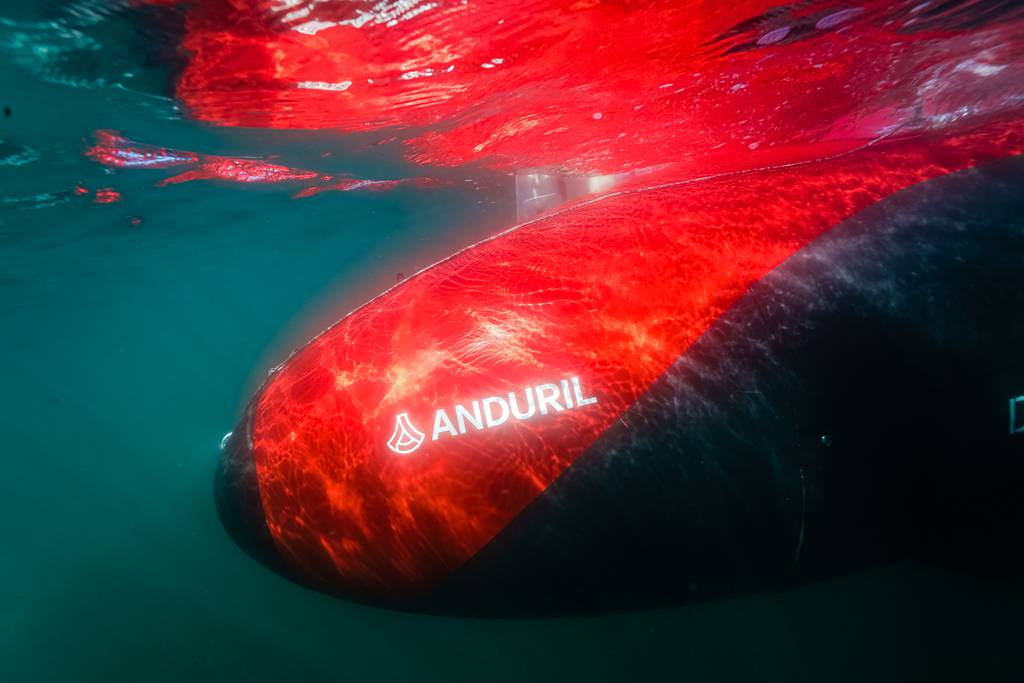
The Defense Innovation Unit awarded Anduril Industries a contract that will get its Dive family of large-diameter autonomous underwater vehicles into the hands of sailors for operations this year.
The award comes after DIU selected the Dive-LD platform to perform in a “swim-off” last year that put commercially available large unmanned underwater vehicles through an obstacle course to assess their maturity and applicability to conduct “distributed, long-range, persistent underwater sensing and payload delivery in contested environment,” according to a Feb. 8 Anduril news release.
DIU is the Pentagon’s commercial innovation hub.
Anduril said the U.S. Navy selected it for a follow-on contract that allows operational units to borrow the unmanned vehicles for experiments or buy them as a routine tool for their missions. The company could not disclose information about the value or duration of the contract, which was awarded through DIU’s Commercial Solutions Opening process.
Read More: Anduril Tech Detects Cruise Missiles
Anduril’s chief strategy officer, Chris Brose, told Defense News the company had worked on maturing and demonstrating the Dive-LD vehicle for the last two years, but the contract now provides a mechanism to get the drone into the hands of sailors across varied geographies and unit types so they can “start solving a lot of different problems across the seabed and undersea domain.”
The contract creates direct access between Anduril and operators. A unit that has never worked with an autonomous underwater vehicle may want to experiment with one for a couple weeks or months, while another unit with a more refined concept for how they’d use the Dive-LD vehicle may want to buy several right off the bat.
Brose said the contract allows for whatever the operators prefer, as well as payload integration and other engineering to get the units a tailor-made system to meet their specific needs.
The Navy has struggled to bring large unmanned underwater vehicles to the fleet.
It kicked off a Snakehead large-diameter unmanned underwater vehicle program in 2017, though the original research program dates to before 2015. The first Snakehead prototype wasn’t christened until 2022, and the Navy and Congress agreed to cancel the program later that year. However, it’s been somewhat resurrected as a market research effort to identify commercially available technology that could be useful to the fleet.
The Navy also pursued an Orca extra-large UUV program, first selecting Boeing as one of two companies for a 2017 design contract and then selecting the firm as the sole winner of a 2019 contract to build four prototypes. The program has seen developmental and manufacturing delays. The company in December delivered a pre-prototype test asset but has not yet completed and delivered any of the prototypes on contract.
Brose said the Dive-LD — which Anduril acquired in early 2022 when it bought Dive Technologies — was designed for manufacturability, payload integration and artificial intelligence-powered smart operations.
The vehicle is made using advanced manufacturing processes, and the outer shell is 3D printed. Brose said this means the company can scale up production to meet demand under this DIU contract and others that may follow.
He referred to this DIU effort as a “breakthrough opportunity” that’s led to Anduril “really beginning to invest and facilitize for larger-scale production, which is something we’re doing in other parts of the business.”
He could not speculate how many Dive-LD vehicles the company might build for Defense Department customers under this DIU contract, but he called it “a really significant next step” for the company.
:quality(70)/cloudfront-us-east-1.images.arcpublishing.com/archetype/PE5O46XWBZB3FBYKDUP4DLGTHE.png)
Because of the advanced manufacturing processes, Anduril can easily redesign pieces of the modular unmanned vehicle to accommodate a payload, reshape or resize the whole vehicle to fit a certain need, and more, based on what customers want.
“I think the excitement for us is the ability to really start doing the things at scale that the vehicle was designed to do,” he said.
In addition to this contract with DIU, Anduril signed a three-year agreement with Australia in 2022 to create something akin to an Orca XLUUV. The company, the Royal Australian Navy, and the Australian government’s Defence Science and Technology Group — in a $100 million co-funding effort — will design, develop and manufacture the extra-large autonomous undersea vehicles.
Author: Megan Eckstein
Source: DefenseNews



